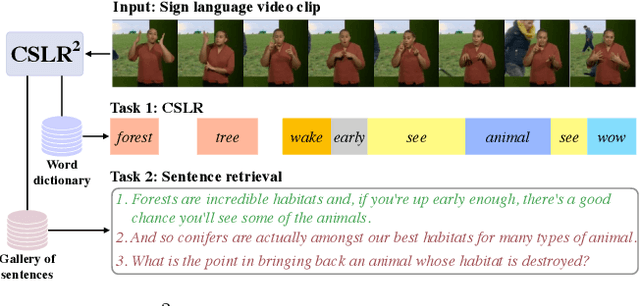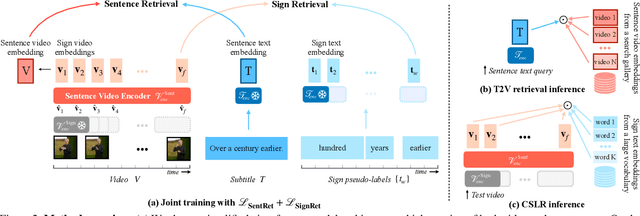A Tale of Two Languages: Large-Vocabulary Continuous Sign Language Recognition from Spoken Language Supervision
Paper and Code
May 16, 2024



In this work, our goals are two fold: large-vocabulary continuous sign language recognition (CSLR), and sign language retrieval. To this end, we introduce a multi-task Transformer model, CSLR2, that is able to ingest a signing sequence and output in a joint embedding space between signed language and spoken language text. To enable CSLR evaluation in the large-vocabulary setting, we introduce new dataset annotations that have been manually collected. These provide continuous sign-level annotations for six hours of test videos, and will be made publicly available. We demonstrate that by a careful choice of loss functions, training the model for both the CSLR and retrieval tasks is mutually beneficial in terms of performance -- retrieval improves CSLR performance by providing context, while CSLR improves retrieval with more fine-grained supervision. We further show the benefits of leveraging weak and noisy supervision from large-vocabulary datasets such as BOBSL, namely sign-level pseudo-labels, and English subtitles. Our model significantly outperforms the previous state of the art on both tasks.
 Add to Chrome
Add to Chrome Add to Firefox
Add to Firefox Add to Edge
Add to Edge